What’s Up?
On Tuesday morning, I headed to the East Pond at the last second after deciding to stay in. It was warm and still and buggy and muggy. A hazy sun broke through for about 30 minutes at 6:30am. Working at 1/500 second at 840mm, I created 748 images and kept 37 — 1/500 is not fast enough to freeze feeding shorebirds.
I headed to Nickerson on Tuesday afternoon. There were hundreds of skimmers and terns on the beach with very few birds still inside the colony ropes. There were lots of Sanderlings feeding along the edge of the surf. There was a nice sunset and dozens of pleasing blur opportunities,
Today is Wednesday 24 August 2022. I am not sure if I will be going to the East Pond or to Nickerson. Wherever you are, and whatever you are doing, I hope that you too have a great day. This blog post took about two hours to prepare and makes one hundred fifty-two days in a row with a new one.
Please remember to use the B&H and Amazon links that are found on most blog pages and to use the BIRDSASART discount code at checkout when purchasing your new gear from Bedfords to get 3% back on your credit card and enjoy free second-day air FedEx. Please, also, consider joining a BAA IPT. You will be amazed at how much you will learn!
Time is Running Out
Many folks are scheduled to join me at either Nickerson or JBWR in the next 10 days. If you would like to learn to be a better photographer and get in on the action at Nickerson, get in touch via e-mail or text me at 863-221-2372.
|
|
|
Clockwise from the upper left corner back around to the center: Wilson’s Phalarope, JBWR; just fledged Common Tern, Nickerson; Black Skimmer, adult skimming, Nickerson; Black Skimmer killing tiny skimmer chick, Nickerson; American Oystercatcher foraging at sunrise, Nickerson; Common Tern chick swallowing baby bluefish, Nickerson; Short-billed Dowitcher, juvenile, double overhead wing stretch, JBWR; Black Skimmers, predawn flock blur, Nickerson; Black Skimmer, 10-day old chick, Nickerson. Click on the card to view a larger version. Nickerson Beach/East Pond JBWR composite |
Nickerson Beach/East Pond at Jamaica Bay (JBWR) In-the Field Workshops
Both Nickerson Beach and the East Pond at JBWR offer some of the best midsummer bird photography on the planet. Hundreds of pairs or Black Skimmers and Common Terns along with dozens of pairs of American Oystercatchers breed at Nickerson each season so there are lots of chicks of all sizes and handsome fledged young birds to photograph. Provided that the water levels are low, hundreds of young shorebirds in their handsome fresh juvenile plumages stop by the pond each August on their way south.
Nickerson often reveals nature at it rawest, most basic level. Most days we get to photograph all sorts of dramatic behaviors ranging from skimmers and terns fishing and feeding (and tending) their young. There are often chances to shoot a variety of predatory encounters — gulls eating large skimmer chicks, skimmers attacking (and sometimes killing) skimmer babies, and Peregrine Falcons hunting. And rarely, if we are lucky, Peregrine Falcons catching! Consider joining me to learn a ton both about bird photography and the birds.
I head south on 31 August and should be back home on 1 September (barring anything unforeseen). I am offering In-the-Field sessions at both Nickerson Beach and the East Pond at Jamaica Bay Wildlife Refuge. If you are interested, please get in touch via e-mail or text me at 863-221-2372.
|
|
|
This image was created on 16 July on a Jacksonville IPT. I used the hand held Sony FE 70-200mm f/2.8 GM OSS II Lens with the Sony FE 1.4x Teleconverter (at 280mm) with The One, the Sony a1 Mirrorless Camera. The exposure was determined via Zebras with ISO on the Thumb Wheel. ISO 640: 1/2500 sec. at f/4 (wide open). AWB at 6:14:43pm on a partly cloudy afternoon. Tracking: Spot S/AF-C with Human Face/Eye detection enabled was active at the moment of exposure and performed perfectly. Be sure to click on the image to enjoy the larger version. Image #1: David Pugsley toe-podding with my Sony 400mm f/2.8 GM lens with the 1.4X TC and an a1 |
Toe Podding
IPT veteran David Pugsley is the first person I ever saw using the toe-podding technique. It is similar to ankle-podding, but is more stable as the lens barrel is placed between your feet and cannot roll as it can when the lens is resting on your ankle. You can, therefore, get away with using somewhat slower shutter speeds and correspondingly lower ISOs (unless you want or need to be ready for action).
Another advantage with toe-podding is that it is very easy to precisely adjust the height of the lens above the ground by squeezing your feet together to get higher, or by toeing them out to get lower. Toe-podding, however, might not be for everyone. Folks who do not have a lot of flexibility in their hips and torso and those with bad backs may be unable to use this technique. I thought that I was not flexible enough to toe-pod, but when I tried it with the 200-600, I was able to do it rather easily. It should be even easier with the longer 600mm f/4. I look forward to trying it again ASAP.
I used this technique last night and realize that foot-podding might be a better term for it.
|
|
|
This image was created at Fort DeSoto by good friend David Pugsley. While seated on damp sand and working off the tilted rear monitor, he used the toe-podding technique with the Sony FE 600mm f/4 GM OSS lens, the Sony FE 2.0x Teleconverter (at 1200mm) and The One, the Sony Alpha 1 Mirrorless Digital Camera). ISO 2500. 1/2000 sec. at f/8 (wide open). AWB on a cloudy-bright day. Tracking: Zone/AF-C with Bird-Eye/Face Detection performed perfectly. Be sure to click on the image to enjoy a high-res version. Image #2: Wilson’s Plover flapping after bath
|
Low Perspectives
Glancing at David’s four featured images reveals that he loves working low at the beach. That is the same with me. Doing so effectively moves the backgrounds well away from the subjects and renders them completely de-focused. Birds set against soft backgrounds of tan, blue, and green instantly become more beautiful.
|
|
|
This image was created at Fort DeSoto by good friend David Pugsley. While seated on damp sand and working off the tilted rear monitor, he used the toe-podding technique with his Sony FE 600mm f/4 GM OSS lens with the Sony FE 1.4x Teleconverter (at 840mm) with The One, the Sony a1 Mirrorless Camera. ISO 2500: 1/2500 sec. at f/5.6 (wide open). AWB on a cloudy morning,. Tracking: Zone/AF-C with Bird Face/Eye detection enabled was active at the moment of exposure and performed perfectly. Be sure to click on the image to enjoy the larger version. Image #3: Banded juvenile Snowy Plover with bit of worm
|
Would You Remove the Bands?
If this fine image were yours, would you remove the bands? Why or why not?
Snowy Plover is a State-designated Threatened Species in Florida. They breed at DeSoto on Outback Key. I am pretty sure that their numbers there have been increasing in recent years.
|
|
|
This image was created on 16 July on a Jacksonville IPT by participant and good friend David Pugsley. While seated on damp sand and working off the tilted rear monitor, he used the toe-podding technique with my Sony FE 400mm f/2.8 GM OSS lens, the Sony FE 1.4x Teleconverter (at 560mm) and The One, the Sony Alpha 1 Mirrorless Digital Camera). ISO 800. 1/2000 sec. at f/4 (wide open) in Manual mode. AWB on a cloudy bright afternoon. Tracking: Zone AF-C with Bird Face/Eye detection enabled performed to perfection. Be sure to click on the image to enjoy a high-res version. Image #4: Royal Tern large chick calling |
Shutter Speeds, ISOs, Depth of Field, and Action
Notice that David works wide open with relatively high shutter speeds without worrying about high ISO settings. He wants to be ready to create sharp images of birds in action while realizing that having the eye or eyes in sharp focus negates the need to render the entire bird sharp. That is particularly evident in the Wilson’s Plover image.
|
|
|
This image was created at Fort DeSoto by good friend David Pugsley. While seated on damp sand and working off the tilted rear monitor, he used the toe-podding technique with his Sony FE 600mm f/4 GM OSS lens with the Sony FE 1.4x Teleconverter (at 840mm) with The One, the Sony a1 Mirrorless Camera. ISO 640: 1/2500 sec. at f/5.6 (wide open). AWB on a cloudy-bright morning. Tracking: Zone/AF-C with Bird Face/Eye detection enabled was active at the moment of exposure and performed perfectly. Be sure to click on the image to enjoy the larger version. Image #5: Semipalmated Plover flapping in the air after bathing
|
David Pugsley
Born in Pittsburgh, PA, David took a keen interest in photography back in 1986. The catalyst? The appearance of Halley’s comet. As an avid astronomer, he wanted to capture the comet on film, and did just that.
That first venture into the world of photography lead to many classes and countless images during his high school years, followed by acceptance into Ohio University’s prestigious School of Visual Communications. While attending OU, he developed a love and appreciation for capturing a moment in time. Unfortunately, his path into a photography career would take a detour upon completion of his Bachelor of Fine Arts degree.
Happily that detour — many years in the worlds of graphic design and marketing, came to an end in 2008 when he reignited his passion for both photography and the outdoors and its inhabitants. His goal is to capture wildlife (including and especially birds), nature, and landscape images that you would be proud to display on the walls of your home, office or business. You can see more of David’s images here. David and wife Michelle will be traveling with me to the Galapagos in a bit more than a year 🙂
Thanks, David!
For allowing me to share your fine images with the boys and girls here in this blog post.
Unsolicited via e-mail from Pete Myers
I just spent 4 days in the field in a graduate course in bird photography taught by Artie Morris at Fort DeSoto. After almost 50 years of experience pointing cameras at birds from the Arctic to Tierra del Fuego, New Zealand and beyond, I thought I was good enough. But what I learned from Artie in just four days has taken me to a whole new level. As he aptly puts it, “birds as art,” not simply bird photography. One of those 4 days was the most satisfying I’d ever experienced, anywhere. The IPT left me euphoric about what I’d learned, and frighteningly committed to recreating my portfolio with the techniques and insights he taught me.
|
Fort DeSoto in fall is rife with tame birds. All the images on this card were created at Fort DeSoto in either late September or very early October. I hope that you can join me there this fall. Click on the composite to enjoy a larger version. Clockwise from upper left to center: Long-billed Curlew, Marbled Godwit, Caspian Tern, Great Egret, Sandwich Tern with fish, Willet, Black-bellied Plover threat display, Snowy Egret, 2-year old Yellow-Crowned Night-Heron, juvenile Yellow-Crowned Night-Heron. |
The Fall 2022 Fort DeSoto Instructional Photo-Tours
Fall 2022 Fort DeSoto Instructional Photo-Tour #1
3 1/2 Days: Tuesday 27 September through the morning session on Friday 30 September 2022. $1899.00 includes three working lunches. Limit six photographers/Openings five.
Fall 2022 Fort DeSoto Instructional Photo-Tour #2
3 1/2 Days: 7 October through the morning session on Monday 10 October 2022. $1899.00 includes three working lunches. Limit six photographers.
Fall 2022 Fort DeSoto Instructional Photo-Tour #3
3 1/2 Days: Monday 31 October through the morning session on Thursday 3 November 2022. $1899.00 includes three working lunches. Limit six photographers.
Fort DeSoto, located just south of St. Petersburg, FL, is a mecca for migrant shorebirds and terns in fall. There they join hundreds of egrets, herons, night-herons, and gulls that winter on the T-shaped peninsula. With any luck at all, we should get to photograph one of Florida’s most desirable shorebird species: Marbled Godwit. Black-bellied Plover and Willet are easy, American Oystercatcher is pretty much guaranteed. Great Egret, Snowy Egret, Great Blue Heron, Tricolored Heron, and White Ibis are easy as well and we will almost surely come up with a tame Yellow-crowned Night-Heron or two. And we will get to do some Brown Pelican flight photography. In addition, Royal, Sandwich, Forster’s, and Caspian Terns will likely provide us with some good flight opportunities as well. Though not guaranteed, Roseate Spoonbill and Wood Stork might well be expected. And we will be on the lookout for a migrant passerine fallout in the event of a thunderstorm or two.
On this IPT, all will learn the basics and fine points of digital exposure. Nikon and Canon folks will learn to get the right exposure every time after making a single test exposure, and SONY folks will learn to use Zebras so that they can be sure of making excellent exposures before pressing the shutter button. Everyone will learn how to approach free and wild birds without disturbing them, to understand and predict bird behavior, to identify many species of shorebirds, to spot the good situations, to choose the best perspective, to see and understand the light, and to design pleasing images by mastering your camera’s AF system. Most importantly, you will surely learn to evaluate wind and sky conditions and understand how they affect bird photography. And you will learn how and why to work in Manual mode (even if you’re scared of it). The best news is that you will be able to take everything you learn home with you so that you will be a better photographer wherever and whenever you photograph.
There will be a Photoshop/image review session during or after lunch (included) each full day. That will be followed by Instructor Nap Time.
These IPTs will run with only a single registrant (though that is not unlikely to happen). The best airport is Tampa (TPA). Once you register, you will receive an e-mail with Gulfport AirBnB information. If you register soon and would like to share an AirBnB with me, shoot me an e-mail. Other possibilities including taking a cab to and from the airport to our AirBnB and riding with me. This saves you both gas and the cost of a rental car.
A $600 deposit is due when you sign up and is payable by credit card. Balances must be paid by check two months before the trip. Your deposit is non-refundable unless the IPT sells out with six folks, so please check your plans carefully before committing. You can register by calling Jim or Jennifer during weekday business hours at 863-692-0906 with a credit card in hand, or by sending a check as follows: make the check out to: BIRDS AS ART and send it via US mail here: BIRDS AS ART, PO BOX 7245, Indian Lake Estates, FL 33855. You will receive a confirmation e-mail with detailed instructions, clothing, and gear advice. Please shoot me an e-mail if you plan to register or if you have any questions.
|
Clockwise from upper left to center: Long-billed Curlew, juvenile Tricolored Heron, Marbled Godwits, Great Blue Heron, juvenile Pectoral Sandpiper, Wood Stork, smiling Sea Scallop, Ruddy Turnstone scavenging needlefish, Great Blue Heron sunset silhouette at my secret spot, and southbound migrant tern flock blur. |
Up Early, Stay Out Late!
Obviously, folks attending an IPT will be out in the field early and stay late to take advantage of the sweetest light and sunrise and sunset colors (when possible). The good news is that the days are relatively short in early fall. I really love it when I am leaving the beach on a sunny morning after a great session just as a carful or two of well-rested photographers are arriving. The length of cloudy morning sessions will often be extended. Click on the composite to enjoy a larger version.
Typos
With all blog posts, feel free to e-mail or to leave a comment regarding any typos or errors.

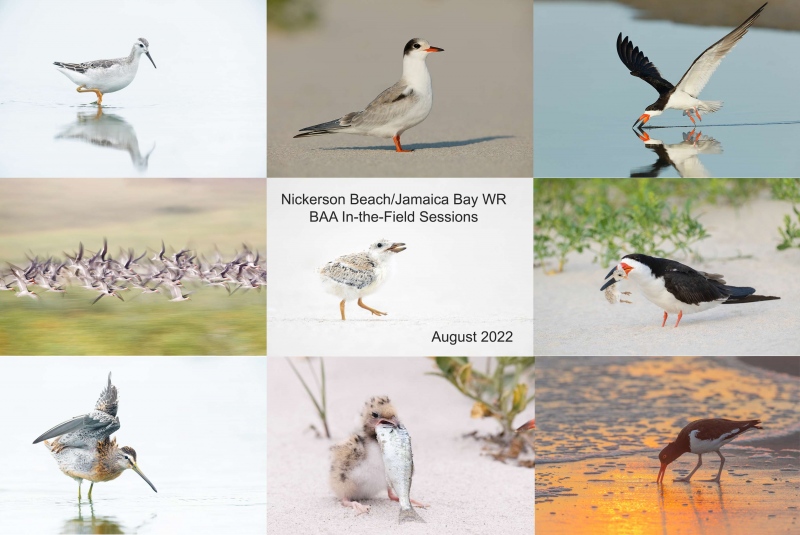
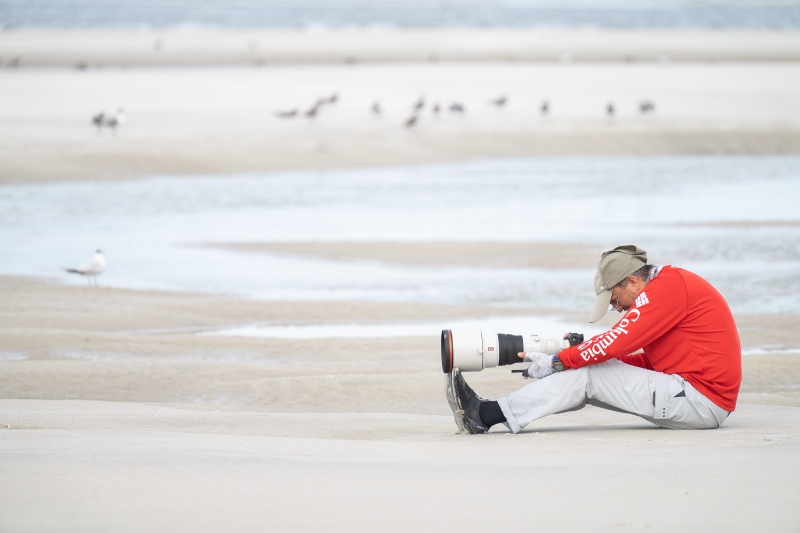
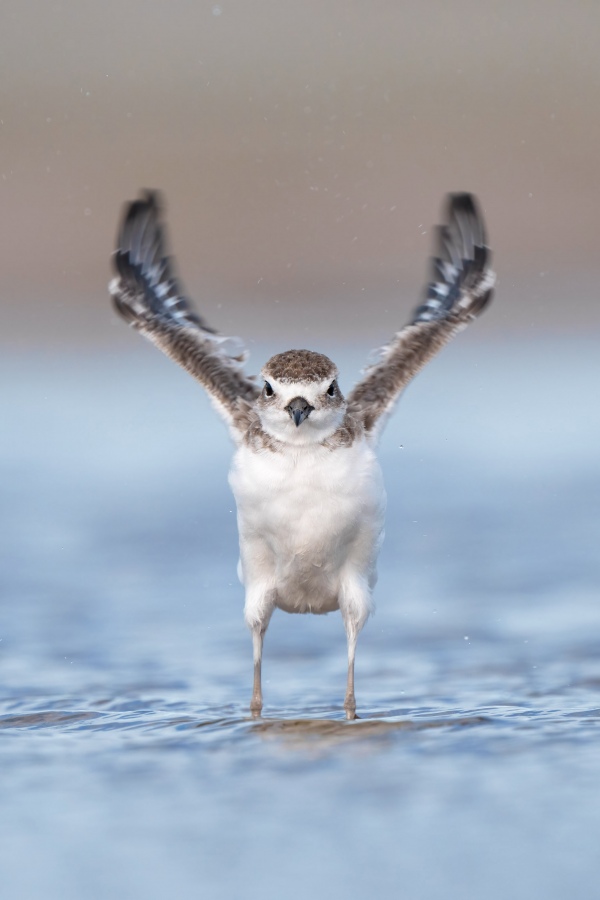
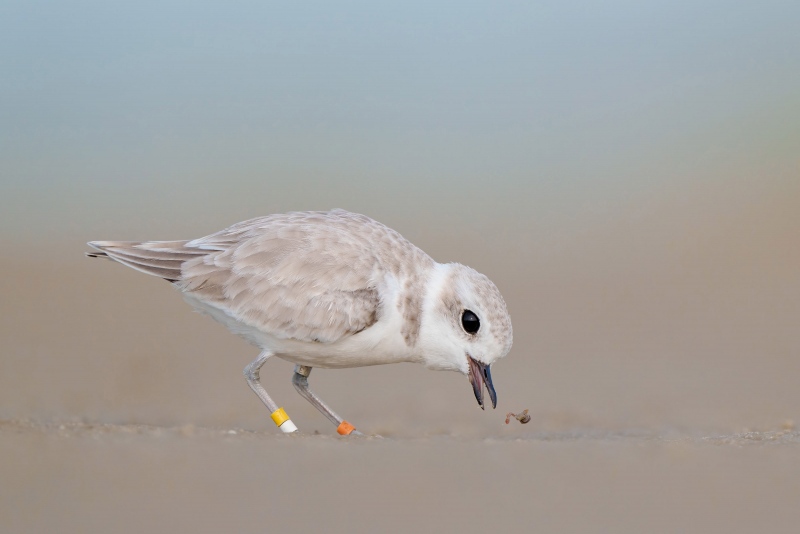
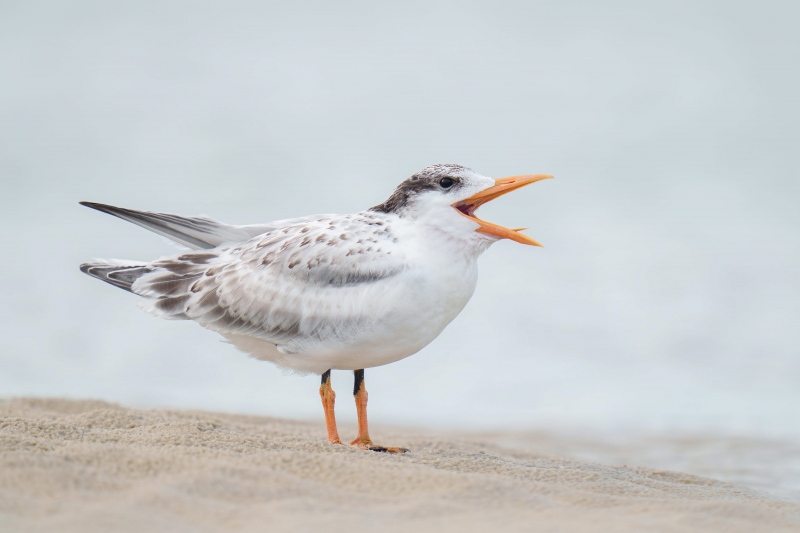
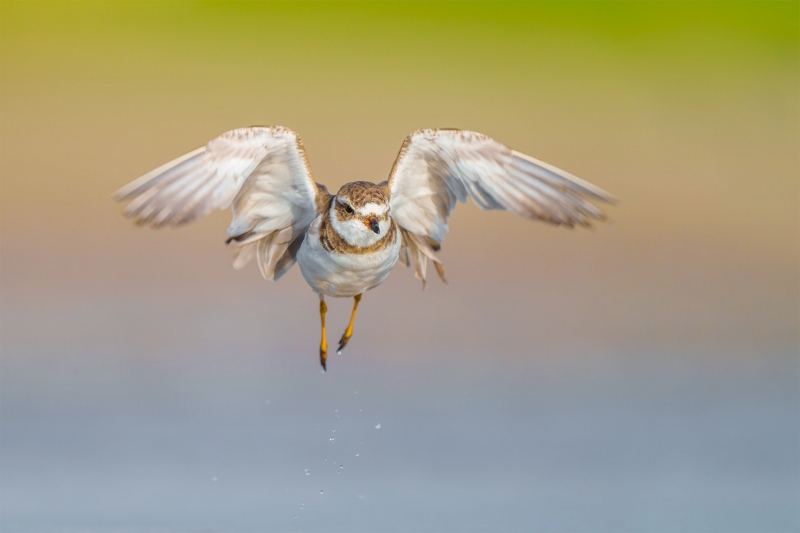















David Pugsley these photos are al great!! Image #2: Wilson’s Plover is saying
Splish Splash I was taking a bath!
Who puts the bands on the birds? What is the purpose of the bands and who monitors them?
BTW, I would absolutely not remove the bands from my photographs of the birds that have them.
Researchers capture and band birds in the name of science but often for their theses. Recovered bands can reveal migratory patterns. Some birds are lucky enough to wear a transmitter on their backs. We saw a skimmer or two wearing one.
with love, artie
Artie
Great shots David i love image 2 of the Plover after a bath looking right at you nice job!
Image #5 is a killer shot in the air after the bath, i am very partial to action and you grabbed this one, great job and awesome photo! Very clean and love the water droplets 🙂
Image #3 NO Way would i remove the bands it tells a story that the Plover has been on a journey and captured at one point and logged in to follow its path in life or perhaps a rehab and released? No i would not remove them!
Always with love b
Bob, More than 99% of banded shorebirds are banded at the nest. They can only tell a story if the are re-captured (that usually very rare) or if they die somewhere and the bands are returned (also very rare). Sometimes the bands can be read from an excellent photo and be reported.
with love, artie